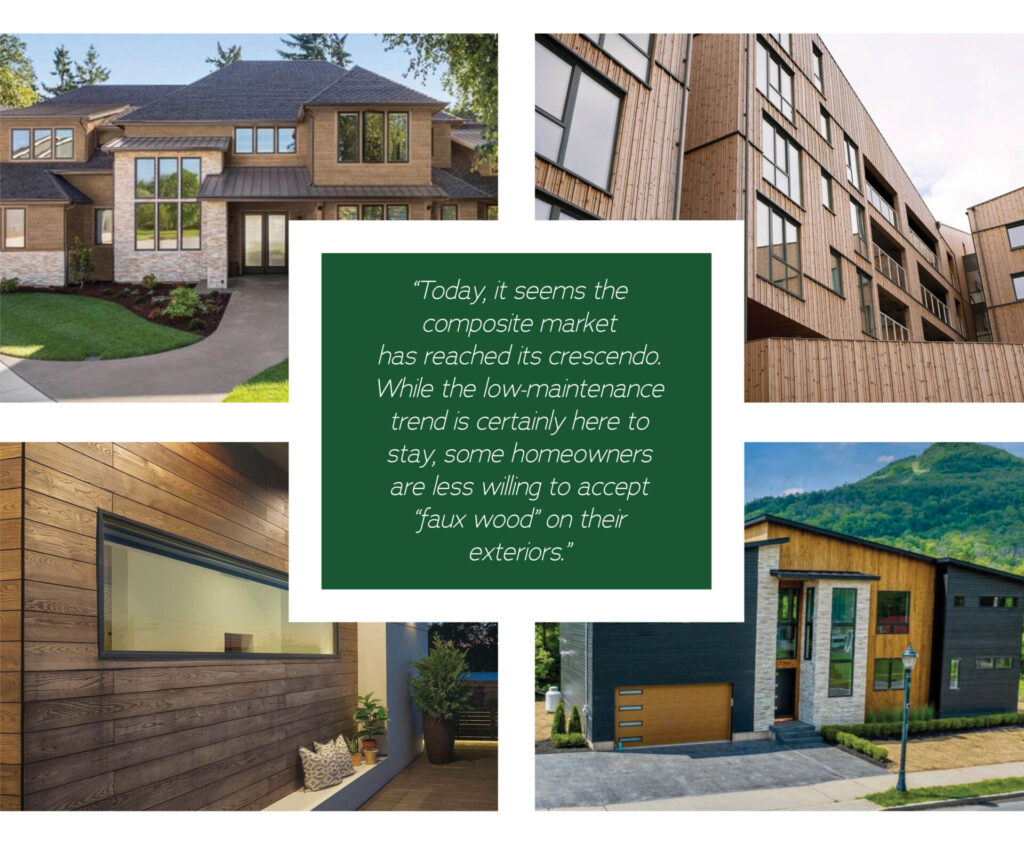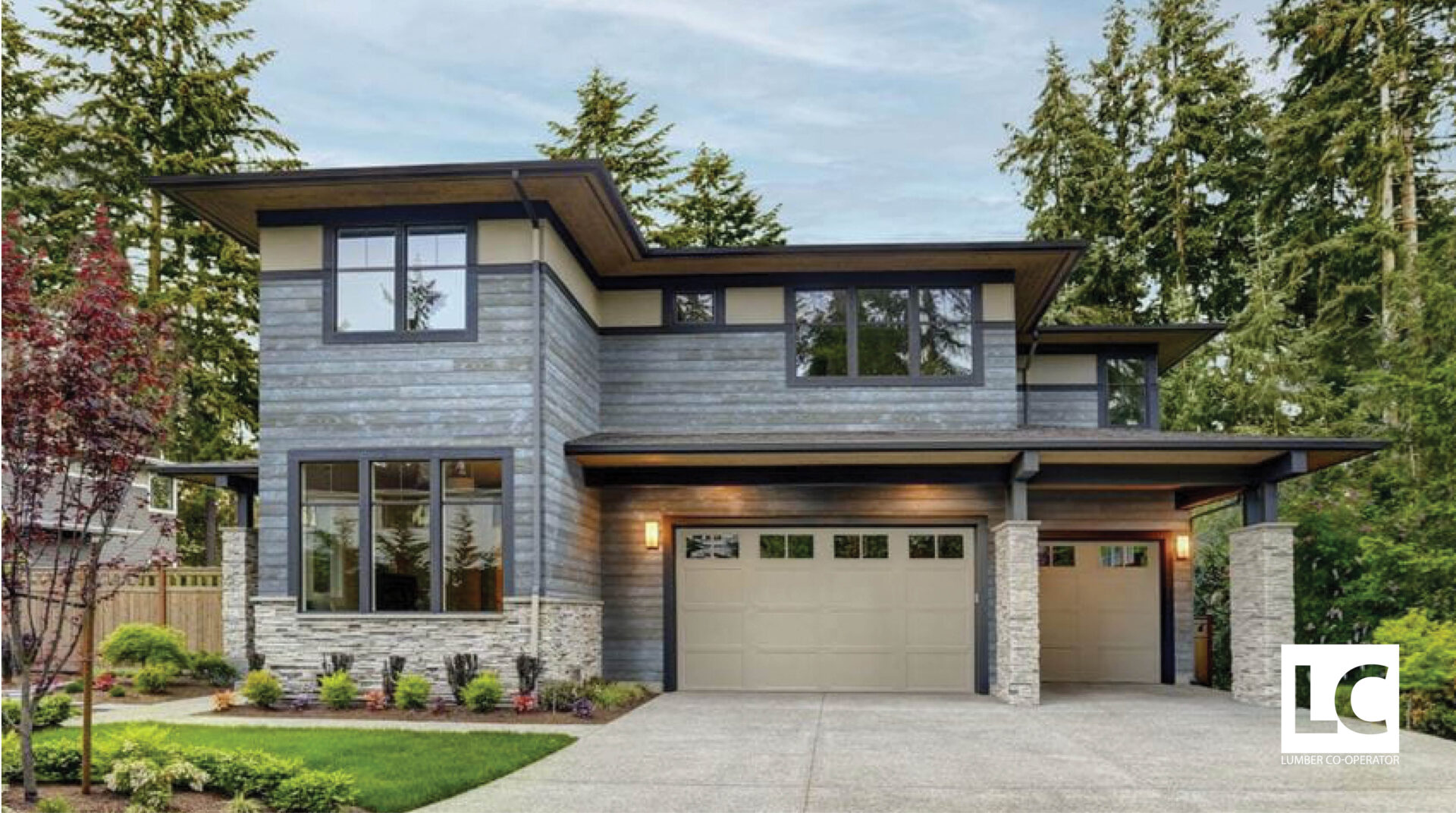“I want this project to look just like wood,” the client tells his architect. “But I don’t want to maintain it.”
Conversations like this have been vexing specifiers and installers for a generation. Wood is beautiful, warm, and alluring, but the unwillingness to perform periodic maintenance has made it a nonstarter for a growing class of consumers. Architects and builders have leaned on composites and non-wood alternatives to deliver on low maintenance, often accepting aesthetic compromises and products that try to emulate wood in the name of foregoing upkeep.
Today, it seems the composite market has reached its crescendo. While the low-maintenance trend is certainly here to stay, some homeowners are less willing to accept “faux wood” on their exteriors. Even with multichromatic tones and a wide assortment of color options on the market, discerning homeowners and architects often view wood alternative products negatively. There’s growing discontent around the use of plastics, and some specifiers have been burned by products with disclaimers and false promises. The market has been craving a wood solution that does the great things wood does—looking natural and pretty—without doing the nasty things wood does, namely rotting, growing mold, and getting eaten by insects.
Thermally modified wood seems to be the solution. First developed more than 1,000 years ago, modified wood was perfected in Northern Europe in the 1990s. In brief, it’s a method of altering the cellular structure of the wood through heat and steam, making it far more durable and removing any food source for rot and degradation. While this method has been accepted in Europe for two decades, recent trends and a growing desire for natural products have turned thermal modification, also known as thermowood, into a craze that is getting hotter by the day.

Consumers love thermally modified wood because it delivers on the promise of a natural product with minimal maintenance. Installers like it because it cuts, screws, and glues like wood—because it IS wood—with a much lower waste factor and better workability. Architects gain acceptance when they see it used successfully, and there are now myriad cases of thermally modified wood being used in prominent exterior environments. When the Coney Island Boardwalk is rebuilt using thermally modified white ash, it tells an architect that the wood is likely to perform well residentially as well as in commercial and municipal applications.
As the market has grown, there is a wide array of wood species being modified, allowing for different looks and a broad spectrum of price points. Some thermally modified wood takes stains and paints extremely well, creating a product that is beautiful unfinished or a great blank canvas for a finished project. Manufacturers, finishers, and specifiers are constantly finding new uses for modified wood, replacing composites and tropical hardwoods on applications ranging from decking and cladding to bench slats, outdoor furnishings, and interior accents.
As with any new trend, it’s important to consider the source when using thermally modified wood. There are lots of new entrants in this space, which means there are likely to be products produced that aren’t up to snuff. When thinking of thermowood, it’s important to consider the track record of the producer and the experience of your supplier. Because many wood species can be modified, offering an array of textures, grain options, and knot- or knot-free appearances, it’s important to ask questions and understand exactly what you’ll be receiving. It’s also important to consider any finishing requirements: Just as with natural, unmodified wood, often a single coat of oil can do wonders in terms of long-term performance. A knowledgeable supplier should be a good guide here.
The growth in thermally modified wood is exciting; it’s truly a step forward for our industry, and it’s the first major innovation in exteriors in a generation. For end users, it’s a category that will allow for more creative design in their projects and for better durability. For architects and specifiers, it’s an opportunity to create statement buildings that last for decades without compromising on material selection. The products and species offered will continue to grow and evolve over time, but it’s a trend that can no longer be ignored.
Want to read the full issue of the May LC? Click here
Jordan Russin is co-president of Russin. Russin distributes a broad spectrum of decking products to 13 Northeastern and Mid-Atlantic states, and helps its customers’ customers choose the right product for them through its digital outreach efforts. Helping end users to make informed choices enables Russin to bring business to its dealer base.







